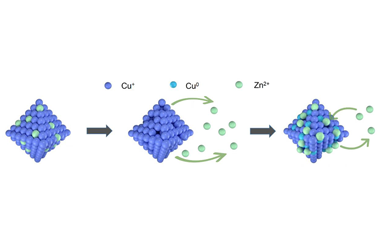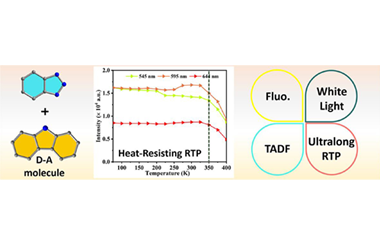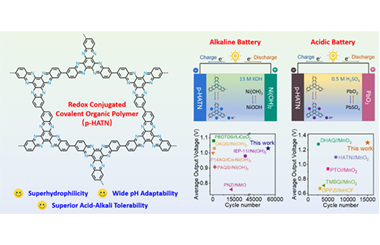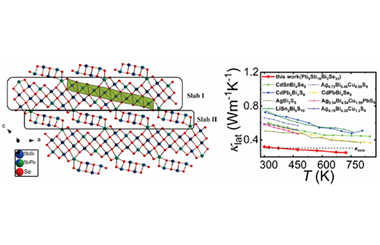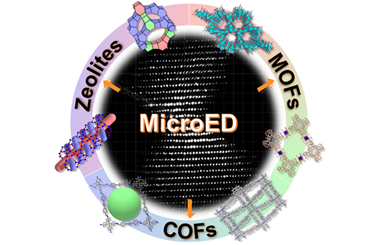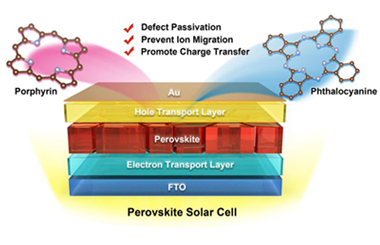
Long-lifespan aqueous alkaline and acidic batteries enabled by redox conjugated covalent organic polymer anodes
Yuanzhe Lu, Yuanqin Zhu*, Linfeng Zhong*, Dingshan Yu*
Submit a Manuscript
-
ArticleA small D-A molecule with highly heat-resisting room temperature phosphorescence for white emission and anti-counterfeiting
Kun Zhang, Ni Dan, Dan-Dan Ren, Ruo-Yu Zhang, Xiaoyan Lu, Ya-Pan Wu*, Li-Lei Zhang*, Hong-Ru Fu*, Dong-Sheng Li
Chin. J. Struct. Chem., 2024, 43: 100244. DOI: 10.1016/j.cjsc.2024.100244
March 15, 2024
Ultralong RTP; TADF; D-A molecule; Heat-resisting; White light
ABSTRACT
A simple donor-acceptor (D-A) molecule, 9-(1H-benzotriazol-1-ylmethyl)-9H-carbazole (CzBtrz), shows superhigh heat-resisting phosphorescence property with an ambient lifetime of 988.54 ms at 545 nm. The phosphorescence performance can maintain the stability in a large temperature region from 77 to 350 K (ΔT = 273 °C), exceeding those of other room-temperature phosphorescence (RTP) systems, and it exhibits white light via thermally activated delayed fluore- scence and phosphorescence dual emission.
-
ArticleDefect and nanostructure engineering of polymeric carbon nitride for visible-light-driven CO2 reduction
Ziruo Zhou, Wenyu Guo, Tingyu Yang, Dandan Zheng*, Yuanxing Fang, Xiahui Lin*, Yidong Hou, Guigang Zhang, Sibo Wang*
Chin. J. Struct. Chem., 2024, 43: 100245. DOI: 10.1016/j.cjsc.2024.100245
March 15, 2024
Carbon nitride; Photocatalysis; CO2 reduction; Nitrogen defects; Nanosheets
ABSTRACT
The 2-aminopyridine molecule with the strong electron-withdrawing group is fused into the skeleton edge of carbon nitride layers to render the material with extended light absorption, appropriate nitrogen defects, and ultrathin nanosheet structure for improved CO2 reduction performance by visible light.
-
ArticleLong-lifespan aqueous alkaline and acidic batteries enabled by redox conjugated covalent organic polymer anodes
Yuanzhe Lu, Yuanqin Zhu*, Linfeng Zhong*, Dingshan Yu*
Chin. J. Struct. Chem., 2024, 43: 100249. DOI: 10.1016/j.cjsc.2024.100249
March 15, 2024
Covalent organic polymer; Polymer electrodes; Organic electrodes; Aqueous batteries; Alkaline and acidic batteries
ABSTRACT
A redox conjugated covalent organic polymer (p-HATN) was explored as a super- hydrophilic and wide pH adaptable an-ode for robust aqueous alkaline and acidic batteries, which displays long cycle life—surpassing most previously reported systems. -
ArticleTe-doped Fe3O4 flower enabling low overpotential cycling of Li−CO2 batteries at high current density
Huyi Yu, Renshu Huang, Qian Liu, Xingfa Chen, Tianqi Yu, Haiquan Wang, Xincheng Liang, Shibin Yin*
Chin. J. Struct. Chem., 2024, 43: 100253. DOI: 10.1016/j.cjsc.2024.100253
March 15, 2024
Li-CO2 batteries; Catalyst; Tellurium; Li2C2O4; Large current density
ABSTRACT
Te-doped Fe3O4 is used as the cathode catalyst of LCBs, which inhibits the disproportionation of C2O42− through electron transfer from Te to O.
-
ArticleNew thermoelectric semiconductors Pb5Sb12+xBi6−xSe32 with ultralow thermal conductivity
Ruizhi Yang, Xia Li, Weiping Guo, Zixuan Chen, Hongwei Ming, Zhong-Zhen Luo*, Zhigang Zou
Chin. J. Struct. Chem., 2024, 43: 100268. DOI: 10.1016/j.cjsc.2024.100268
March 15, 2024
Thermoelectric; Semiconductors; Pavonite-type structure; Pb5Sb12+xBi6-xSe32; Mixed occupancies; Ultralow thermal conductivity
ABSTRACT
Five new pavonite-type Pb5Sb12+xBi6−xSe32 with a quasi-two-dimensional layered structure have been reported, exhibiting an ultralow lattice thermal conductivity due to their intricate composition and anisotropic crystal structure. -
ReviewMicroED as a powerful technique for the structure determination of complex porous materials
Chao Ma, Cong Lin*, Jian Li*
Chin. J. Struct. Chem., 2024, 43: 100209. DOI: 10.1016/j.cjsc.2023.100209
March 15, 2024
Atomic structure; MicroED; Porous materials; Three-dimensional electron diffraction
ABSTRACT
The innovative and pivotal MicroED technique can overcome the difficulties of conventional SCXRD and PXRD in the structure determination of complex porous materials encompassing zeolites, MOFs and COFs, enabling the efficient and precise understanding of their atomic structures and intrinsic structure-property relationship.
-
ReviewAdvancement in porphyrin/phthalocyanine compounds-based perovskite solar cells
Chen Lu, Zefeng Yu, Jing Cao*
Chin. J. Struct. Chem., 2024, 43: 100240. DOI: 10.1016/j.cjsc.2024.100240
March 15, 2024
Porphyrin; Phthalocyanine; Charge transport; Interfacial chemistry; Perovskite solar cells
ABSTRACT
This review discusses significant progress made in enhancing the performance of perovskite solar cells (PSC) through the doping of porphyrin and phthalocyanine compounds. These macrocyclic compounds contribute to regulating the properties of perovskite films, significantly improving the charge transfer efficiency and enhancing device stability. The review emphasizes their roles in passivating defects, preventing ion migration and facilitating charge transfer, underscoring their potentials to expand the application range of PSCs.
-
ReviewGas sensors based on metal-organic frameworks: challenges and opportunities
Xiaoyan Peng, Xuanhao Wu, Fan Yang, Yefei Tian, Mingming Zhang, Hongye Yuan*
Chin. J. Struct. Chem., 2024, 43: 100251. DOI: 10.1016/j.cjsc.2024.100251
March 15, 2024
Metal-organic frameworks (MOFs); Gas sensors; Integration approach; Sensing performance
ABSTRACT
This mini-review summarizes recent advances in the structure design of MOFs for gas sensing, their integration with electronic devices and the combination of sensing with artificial intelligence. Current challenges and opportunities for the ongoing pursuit of miniaturization and building of smart sensing systems with anomaly detection, self-calibration and lifetime prediction are also included.

